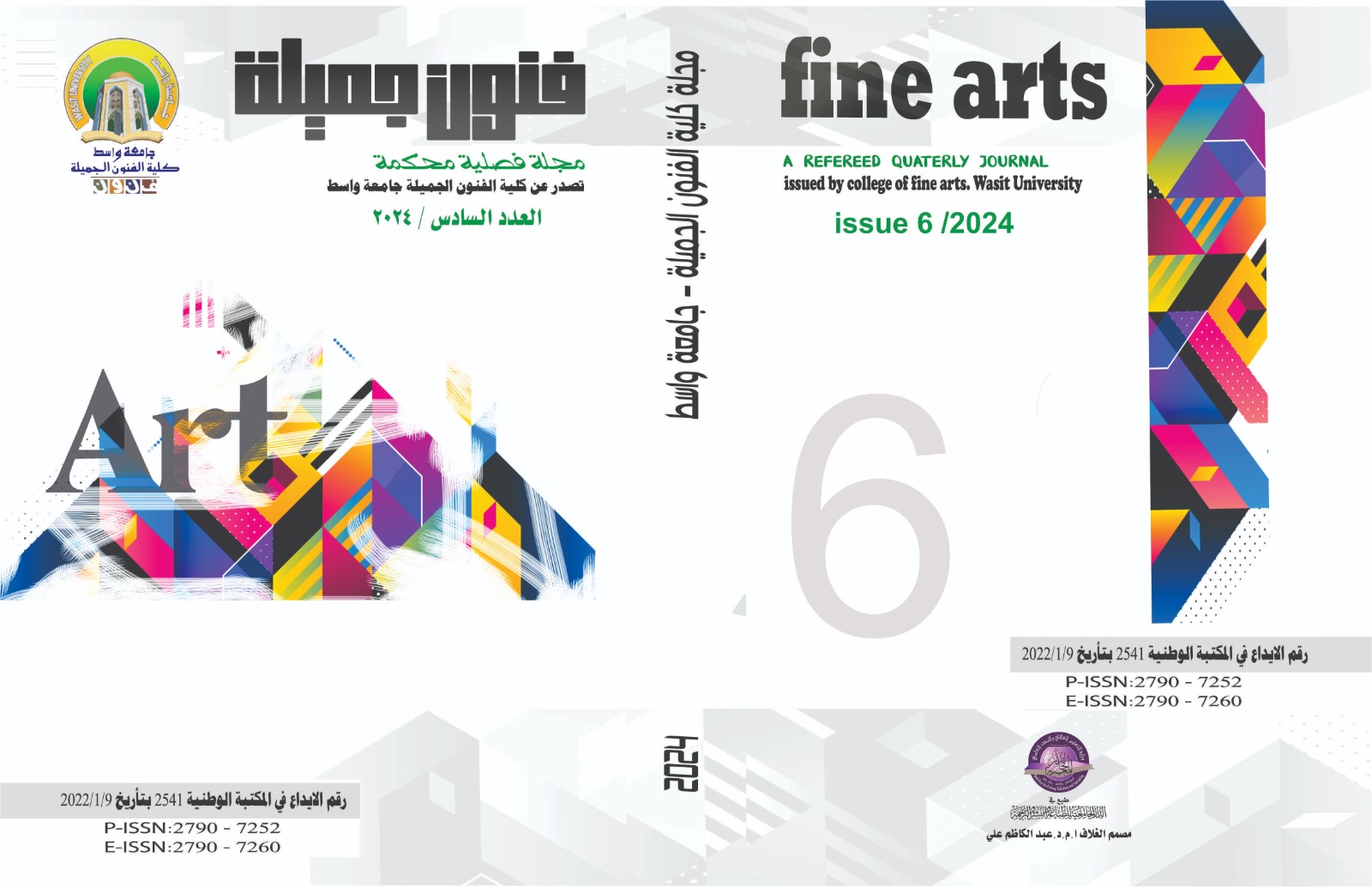Abstract
The current research dealt with the study of (representations of imagination in the works of the artist Frank Frazetta). The research included four chapters. The first chapter dealt with the methodological framework of the research. Represented by the research problem, which centered on the following question (What are the representations of imagination in the works of the artist Frank Frazetta), and the first chapter also included the importance of research and the need for it, in addition to the goal of the research, which aims to identify representations of imagination in the works of the artist Frank Frazetta and the limits of the research and define its terms. As for the second chapter, it included the theoretical framework of the research and its indicators, and the theoretical framework included It consists of two sections, the first section deals with the concept of imagination in the cognitive field, while the second section, the researcher discussed the artist's artistic experience Frank Frazetta (1928AD - 2010AD), and the theoretical framework ended with the indicators he reached. The researcher, and the third chapter included the research procedures represented by the research community and the research sample which amounted to (4) technical models, in addition to the research methodology and its tools How to prepare and verify it Of its validity and reliability, as well as the statistical tools and methods that the researcher used, the third chapter ended with an analysis of the research sample, while the fourth chapter contained the research results, conclusions, recommendations and proposals And it was from Most prominent search results:
1- Imagination appeared in the visual scene as a result of the artistic approach between experience and the artist’s spirit, where the idea and the artist’s spirit are transformed into imaginative creativity, both of which produce a form with artistic structural signs that are in harmony at the level of colour and shape, as in all the sample models.
2- The conflict played a clear role between the forces of good and evil, as setbacks and defeat affected the artist’s works, as well as in the sample models (1, 2, 3).
3- The artist's works emphasize the dynamism of life, as he combines vitality and movement, as in Model (2, 3, 4), and static movement, as in Model (1), in an innovative aesthetic space that bears the features of the artist's own style (Frank Frazetta).
4- Such as the human body with a realistic dimension, the most recurring relationships in its products in a specific functional or aesthetic entity as an influential force in manifesting imagination, as in model (3, 4).
5- The artist tried to search for a comprehensive imaginative vision by combining reason and conscience, which is what the artist was looking for, as the process of moving from the stage of feeling and feeling to the areas of creativity and desired truth gave a new, unique, imagined reality as the artist sees it and not as we see it, as in the sample model (3). ,4).
6- The environment, with its cultural dimension, was the main driver in the pictorial scene, using several plastic vocabularies such as man, horse, leopard, trees, and monkey, and employing them in several meanings that fit the artist’s imaginative idea, as in the sample form (1, 2, 3, 4).
7- Underlining the lines in the pictorial scene using straight lines with zigzag lines created a strong feeling of contrast between strength and weakness, life and death, as in all models of the sample.

